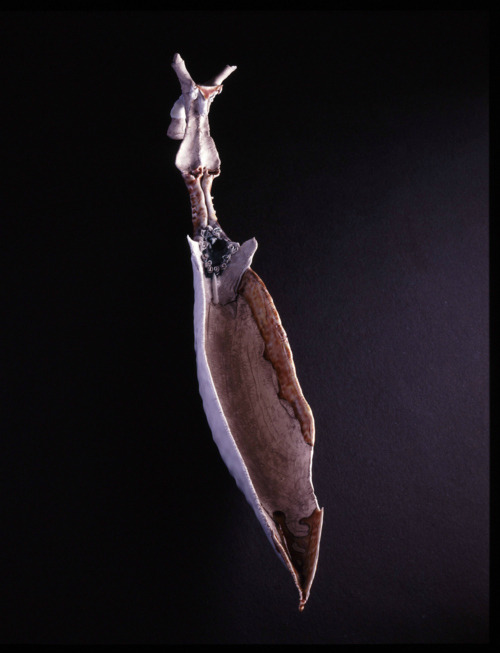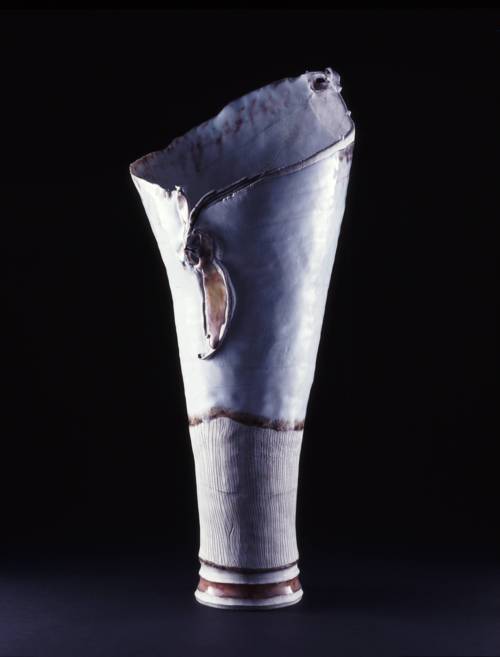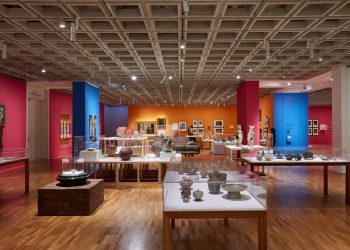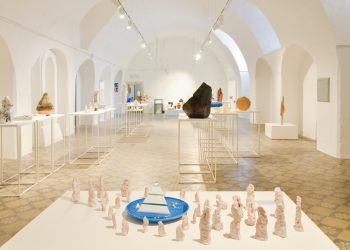
You were among the first contemporary Japanese artists to combine ceramics and glass when constructing a new work. How did you start to connect these materials?
I wanted to to extract the ingredients from the glaze and embed them into the clay. For example, I tried to use fragments of smashed glass bottles, feldspar, silica stone and beach sand in my white porcelain works, and I did that by mixing these fragments with the glaze. I also wanted to observe the chemical reactions between those materials and the clear glaze after the firing. Throughout these experiences, I was fascinated about the harmony of the different kinds of translucency between glass and white porcelain. I also love touching the unfired clay with bits of glass inserted into it, and I want to get the similar feeling after the firing. I want to constantly develop my work, so I am still looking for new glazes and new kinds of glass as well as interesting materials that go well with my style of work.
What is your present project and how do you make the pieces? Tell us more about the process.
Now I am trying to construct a few sculptures using slip casting. After making several different kinds of plaster casts, I connect them. I use my original technique in my newest works, which consists of applying small clay balls and sand on the surface.
Do you make your pieces functional, or just decorative? What do you think about the functionality of a ceramic work?
I create a lot of functional pieces. If we enjoy and appreciate functional pieces, it would be fair to say that in some way they are also decorative.
Memories bind more to functional pieces, so I want to continue creating them. Even if one of my pieces brokes, I enjoy observing it because I feel like I could get a glimpse of personal history inside of it. It doesn’t make sense for me to categorize my pieces as functional or decorative ones.
Where do you get your inspiration from and what motivates you?
I am attracted by a lot of the seams and shapes of Chinese characters. I also tend to cut in my mind the vertical images I had seen and which were piled-up inside my brain. It’s like eating a layered cake. I sometimes write down sketches of life in my notebook. Those images give me the needed inspiration, but I always try to mix the past and present emotions onto my pieces. I feel motivated by the beautiful people around me.
Tell us about your plans – future exhibitions.
I look forward to having my solo exhibition at KEIKO Gallery in May 2012.
I would like to show my pieces outside Japan more often, and I really want to challenge myself to do a show focused on green ceramics.

Untitled, 2009, Glazed clay. Photo by Taku Saiki – View his works
KAWABATA Kentaro begins forming his sculptural and functional pieces from a flat sheet of porcelain clay into which he embeds pieces of colored glass. When fired, the melted glass creates subtle colorations and patterns on the matte glazed surfaces similar to brush strokes of watercolors on paper. The unique qualities of his work are also enhanced by his improvisational approach to forms and surface textures which might express sensations and feelings of his everyday life—a momentary seasonal influence or even some small pleasure or indignity.
KAWABATA began exhibiting his works composed of porcelain and melted glass shortly after graduation from the Tajimi City Pottery Design and Technical Center in 2000. Although this work received an enthusiastic response, many people were initially confused by this odd fusion of porcelain clay and glass. To some, the contorted vessel forms with streaks and splashes of melted red glass reminded them of spattered blood. However, these were the pieces that many collectors remembered long after seeing them and those that have put KAWABATA in the forefront of promising young Japanese ceramists.
By Vasi Hirdo.
Published in Ceramics Now Magazine Issue 1.
Visit Keiko Gallery’s website.




















